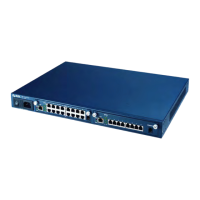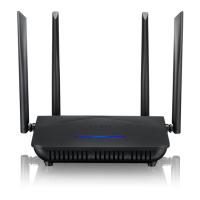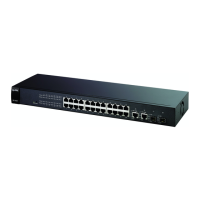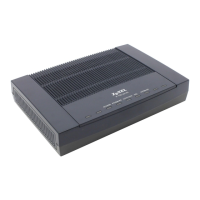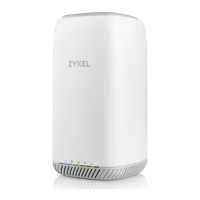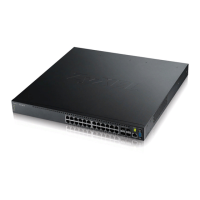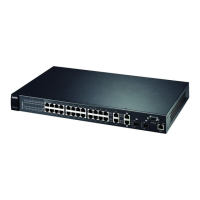Chapter 9 The CLI
IES4005M User’s Guide
76
Each command is usually in one mode. To run a particular command, you have to change to the
appropriate mode. The command modes are organized like a tree, and you start at the root of the
tree in enable mode. Here are some examples of how to change modes.
9.8 Dual Image Files
The IES supports dual firmware images. You can store up to two firmware files (of the same device
model) on the IES. Only one firmware is used at a time. This allows immediate rollback on system
boot up in case the current firmware is corrupt. By default, the switch uses firmware ras-0 while the
second firmware file is named ras-1. See Section 11.7 on page 95 for commands for managing
firmware and for how to use FTP to upload firmware to the IES.
9.9 Dual Configuration Files
The IES also supports dual configuration files that you can switch between.
9.10 Saving Your Configuration
When you run a command, the IES saves any changes to its run-time memory. The IES loses these
changes if it is turned off or loses power. Use the write memory command in enable mode to save
the current configuration permanently to non-volatile memory.
Note: You should save your changes after each CLI session. All unsaved configuration
changes are lost once you restart the IES.
9.11 Logging Out
Enter the exit command in configure mode to go to mode.
Table 56 Changing Between Command Modes for Privilege Levels 13-14
MODE ENTER MODE LEAVE MODE
enable exit (while in configuration mode) exit (logs you out)
configuration
configure (while in enable mode) exit (takes you to enable
mode)
DSL interface sub-commands
interface dsl <slot/
portlist>
(while in enable mode)
exit (takes you to
configuration mode)
ras# write memory

